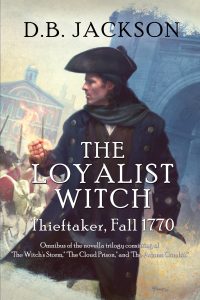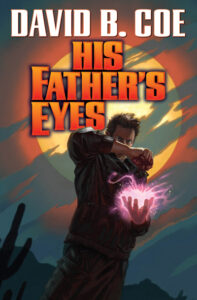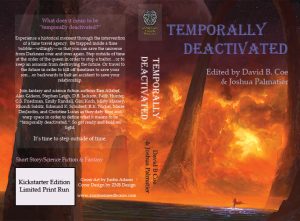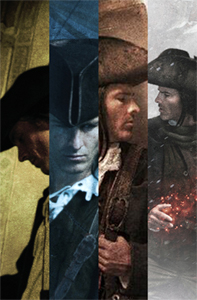December has come to my little corner of the Cumberland Plateau. The trees are bare, days of gray skies and cold winds outnumber the blue, chickadees and nuthatches, titmice and woodpeckers and cardinals flock to my feeders. Yes, we still have nearly a month left in 2022, but already these remaining weeks feel foreshortened. The holidays will gobble up much of our time and energy in the closing days of the month, and we will be distracted by all the preparations for family get-togethers and the like.
Which is as it should be. The past two years have seen our holidays strained and, for some, ruined by the pandemic. We deserve a holiday season.
Already, though, my professional thinking has turned to 2023. In past years, I have written about my penchant for mapping out my professional year, trying to plan for the many projects I intend to take on in the months to come. I didn’t write a post of this sort last year, because of the uncertainty surrounding our daughter’s health, and the fresh memory of how so many of my plans were upended in 2020 and 2021 by the pandemic, by family issues, by emotional strain, etc. The fact is, my professional plans are always just that: plans, intentions, hopes even. Nothing more.
And so I approach the coming year with a bit more humility than I did in the years before Covid and before my family’s health crisis. Any work calendar I create will be written in pencil, not pen.
But I also understand that planning out my work calendar helps me, and I believe you might find it helpful to create a similar plan for your coming year.
Right now, I am struggling to decide what major writing project I will take on next. I have posted about this before, and have asked for input from followers of my work and this blog. Yet, still I haven’t been able to decide on a path forward. That’s fine for now. I have stories to read for the Artifice and Craft anthology. I have a story to write for the Dragonesque anthology. I have a couple of editing clients interested in engaging me for some work. In short, I have no shortage of things to keep me busy.
I’d be lying, though, if I said I wasn’t missing the allure of the new shiny. One of the things a work calendar does is keep me looking forward. Often a project supplies its own momentum. The desire to see it through to the end, to complete the damn thing, is usually enough to keep me on task. Now and then, though, I need the carrot of the next project to pull me through. “When I finish this, I get to work on X.”
Put another way, I don’t have to decide right now what major writing project to take on in 2023. I am certain, however, that if I can decide and hold that next project out as the prize I get for completing other things, it will make reading anthology slush a little easier.
I also find a work calendar helpful as I seek to manage my own professional expectations. It’s easy to look at a blank calendar and think, “I have all year to get X,Y, and Z finished.” As it happens, this is rarely the case. Already I know that I’ll be editing short stories for much of January and preparing for the releases of The Chalace War books starting in February and continuing through the spring. (Oh, and here’s the art for book I again, just because I love it so much . . . .) Plus, non-writing stuff is bound to impinge on my writing time. We need to do some work on our house, and that will also probably come in the spring. The work promises to be disruptive. There is no way I’ll be as productive as usual while it’s going on.
I need to take all of this into account while planning my schedule. Because even if some of my deadlines are self-imposed (rather than coming from a publisher) I know that missing them can disrupt the work to follow. It can also have an impact on my mood, on my self-confidence as an artist. We should always keep our expectations for ourselves realistic. The last thing we want to do is set ourselves up for repeated failures by expecting too much from ourselves and not taking into account time commitments we have to make to other parts of our lives. This is not to say that we should budget too much time for projects. There is a balance to be found. We want to push ourselves to accomplish tasks that matter to us, without expecting so much that we can’t help but fail. A work calendar helps me with that.
So as the year winds down, and as I sit in front of a fire, or in front of yet another World Cup soccer match, I will be working on my work calendar, mapping out a strategy for getting done all I hope to accomplish, and also for managing the inevitable disruptions that life — both professional and private — tends to throw in our path. It’s easy to do. I receive calendars in the mail all the time from the various charities we give to each year. I always reserve one of those calendars for this.
Best of luck with your 2023, whether or not you map it out ahead of time.
And, of course, keep writing.









 One idea is to write my next Thieftaker novel, either in the form of a trio of novellas, like I did with
One idea is to write my next Thieftaker novel, either in the form of a trio of novellas, like I did with 
 I want to write at least one more
I want to write at least one more  This will be the fifth anthology I have edited for ZNB (after
This will be the fifth anthology I have edited for ZNB (after  Since writing it, though, I have become sort of fixated on the idea. I am editing my fourth anthology, and already looking at the possibility of editing another. My freelance editing business is attracting a steady stream of clients — I’m booked through the spring and have had inquiries for slots later in the year.
Since writing it, though, I have become sort of fixated on the idea. I am editing my fourth anthology, and already looking at the possibility of editing another. My freelance editing business is attracting a steady stream of clients — I’m booked through the spring and have had inquiries for slots later in the year. I am not an acquiring editor. I do decide, along with my co-editor, whose stories will be in the anthologies I edit, so I suppose in that way I am determining the fate of submissions and, in a sense, “buying” manuscripts. But, for now at least, I don’t make decisions about the fate of novels, and so I don’t have to go toe-to-toe with agents. Good thing. They scare me. (Looking at you, Lucienne Diver.)
I am not an acquiring editor. I do decide, along with my co-editor, whose stories will be in the anthologies I edit, so I suppose in that way I am determining the fate of submissions and, in a sense, “buying” manuscripts. But, for now at least, I don’t make decisions about the fate of novels, and so I don’t have to go toe-to-toe with agents. Good thing. They scare me. (Looking at you, Lucienne Diver.) I am not the most talented writer I know. Not by a long shot. I am good. I believe that. My character work is strong. My world building is imaginative. My prose is clean and tight and it flows nicely. I write convincing, effective dialogue and I have a fine eye for detail. My plotting and pacing, which were once just okay, have gotten stronger over the years. I think writing the Thieftaker books — being forced to blend my fictional plots with real historical events — forced me to improve, and that improvement has shown up in the narratives of the Islevale and Radiants books.
I am not the most talented writer I know. Not by a long shot. I am good. I believe that. My character work is strong. My world building is imaginative. My prose is clean and tight and it flows nicely. I write convincing, effective dialogue and I have a fine eye for detail. My plotting and pacing, which were once just okay, have gotten stronger over the years. I think writing the Thieftaker books — being forced to blend my fictional plots with real historical events — forced me to improve, and that improvement has shown up in the narratives of the Islevale and Radiants books. As many of you know, I am once again co-editing an anthology for
As many of you know, I am once again co-editing an anthology for  I discussed the Thieftaker books in last week’s post, and I mentioned how my love of U.S. history steered me toward setting the series in pre-Revolutionary Boston. But I failed to mention then that upon deciding to set the books in 1760s Boston, I then had to dive into literally months of research. Sure, I had read colonial era history for my Ph.D. exams, but I had never looked at the period the way I would need to in order to use it as a setting for a novel, much less several novels and more than a dozen pieces of short fiction. Ironically, as a fiction author I needed far more basic factual information about the city, about the time period, about the historical figures who would appear in my narratives, than I ever did as a doctoral candidate.
I discussed the Thieftaker books in last week’s post, and I mentioned how my love of U.S. history steered me toward setting the series in pre-Revolutionary Boston. But I failed to mention then that upon deciding to set the books in 1760s Boston, I then had to dive into literally months of research. Sure, I had read colonial era history for my Ph.D. exams, but I had never looked at the period the way I would need to in order to use it as a setting for a novel, much less several novels and more than a dozen pieces of short fiction. Ironically, as a fiction author I needed far more basic factual information about the city, about the time period, about the historical figures who would appear in my narratives, than I ever did as a doctoral candidate. The same is true of the worlds I build from scratch for my novels. My most recent foray into wholesale world building was the prep work I did for my Islevale Cycle, the time travel/epic fantasy books I wrote a few years ago. As with my Thieftaker research, my world building for the Islevale trilogy consumed months. I began (as I do with my research) with a series of questions about the world, things I knew I had to work out before I could write the books. How did the various magicks work? What were the relationships among the various island nations? Where did my characters fit into these dynamics? Etc.
The same is true of the worlds I build from scratch for my novels. My most recent foray into wholesale world building was the prep work I did for my Islevale Cycle, the time travel/epic fantasy books I wrote a few years ago. As with my Thieftaker research, my world building for the Islevale trilogy consumed months. I began (as I do with my research) with a series of questions about the world, things I knew I had to work out before I could write the books. How did the various magicks work? What were the relationships among the various island nations? Where did my characters fit into these dynamics? Etc. These are books I turn to again and again during the course of my work, and I expect the writer on your list will do the same. Not all of them are easy to find, but I assure you, they’re worth the effort. So here is a partial list:
These are books I turn to again and again during the course of my work, and I expect the writer on your list will do the same. Not all of them are easy to find, but I assure you, they’re worth the effort. So here is a partial list: